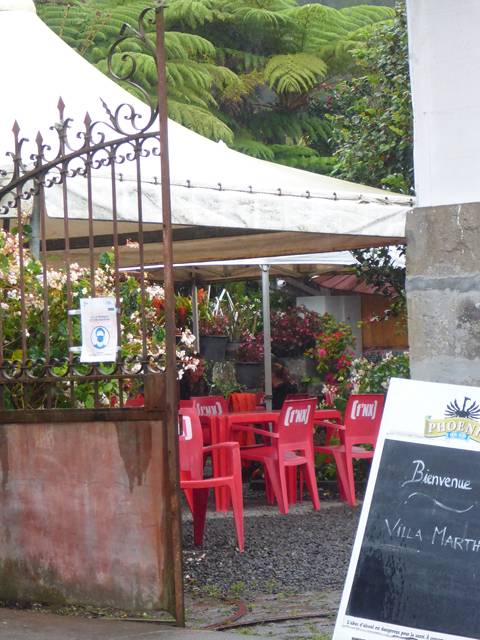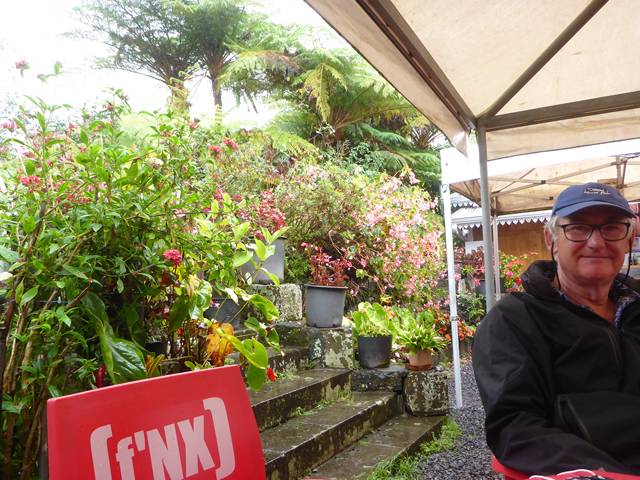Where three Craters meet in La Reunion

|
La Reunion de Trois Cirques (The Reunion of Three Craters) Cirque Salazie – Cirque Mafate – Cirque Cilaos It is wonderfully cool here in the marina at the moment. I was going to start this blog yesterday morning but then I got caught up in filling in forms on line and sending them to the authorities in Richards Bay and Durban, South Africa and to two contacts there who can speak on our behalf if necessary. Our next voyage falls naturally into two sections; from here to south of Madagascar and secondly across the Mozambique Channel where the ‘buster’ lows can well up from the Southern Ocean and hit the south running Agulhas Current head on with mountainous seas resulting, usually along the coast between Durban and south to Port Elizabeth. Our option if that happens is to head NW to Richards Bay where we will hopefully be above the worst of that turbulence. If not then a direct route to Durban will save us 80 miles. Richards Bay is a popular destination in normal times because there are numerous safari destinations from there, but that’s a little pointless at the moment since we will only be allowed ashore to provision, and possibly only be permitted to stay for 72 hours. There is a mandatory Covid test we will have on arrival, so if that comes back negative maybe we will be allowed to hang around a little longer. We need to coast hop to Cape Town to leave for the northward trip home around February, so we will have 10 – 12 weeks to spend in SA. Back to the present. Le Piton Neiges Volcano is a greedy fellow; sitting at the high point the now extinct volcano, at just over three thousand metres, has not one, nor two but three craters (cirques, calderas) sitting around him and only very rarely sports a hat of snow, as his name suggests. I had seen an inspiring photo in a brochure about the island which showed a woman sitting on a reclining chair on a grassy plateau in the early morning sun surrounded by near vertical peaks covered in lush green foliage and dramatic against a clear blue sky. I wanted that experience for us and only hoped the guest house I had randomly booked because it appeared near the edge of the Cirque Salazie would come up with the goods; but first we had to get there. Rob collected the Citroen C1 and we first of all did two fuel runs for Zoonie. The back of the little car would only fit four containers at once! We each boldly lugged a full container in each hand from the car park back to Zoonie, my arms almost reaching the pontoon by the time I got there. Second time around a young Chilean, crewing with his father on the same route as us, ran across from his yacht to take my cans the rest of the way; how very kind I thought and said. When we had been approaching the island we saw lots of headlights right down at the water’s edge along the coast on which we were now driving. As daylight crept abroad we also noticed what looked like a road built on stilts over the water around the land. Now you can see it is a brand new road, nearing completion and it will carry the rapidly increasing volume of traffic safely away from the base of the volcanic cliffs that constantly send lethal rock falls onto the road below. Massive metal nets cover the rock face to try and keep the heavy missiles from causing any damage. All the same the new road will probably save in constant repairs more than it cost to build. We stumbled into crowded St Andre for a quick look around. The centre was incredibly busy with shoppers and traffic, the streets and pavements like so many in the UK, in a poor state of repair as if they had been built and then never maintained. The smartest part was the Catholic Cemetery. We never did find the Office de Tourisme but surprisingly, back in our little white shoe, we drove straight onto the D48 that ran alongside the Riviere du Mat towards Salazie, fortunately leaving all the coastal traffic behind. We were by this time ready for a break, a coffee and a little history. The sides of the valley were lush green and I wondered how the trees clung to near vertical rock. The river flowed fast beneath us, fed by the thousands of waterfalls (cascades) flowing from above after the frequent rainfall on this moisture rich side of the island. We crossed the river over the bridge you see from the 1859 engraving to a pretty little café where the crested Bulbul Orphee, Orphan Bulbul, was tucking into the previous customers’ sugar pot. So from now on we knew that a lot of the local residents we saw further up the valley were likely to be descendants of the escaped slaves, Marron, who lived out their lives on their small holdings, growing among other crops, maize, banana, papaya and potato, away from the pains of their enslavement. Understandable that after the abolition of slavery in 1848 most could not get on with their masters and joined their fellows further up the fertile slopes of their new master, Le Piton Neiges. The island is a wonderful mix of races; indentured Indians were brought in after the ‘Abolition’ to work the sugar, coffee and vanilla plantations and others came from Asia, some by choice and Africa and its small eastern sister, Madagascar, plus of course the Europeans, especially from France. The island had so much to offer, not just in fertility and climate but also its location put it on the clipper run from Europe to Asia and the East India Companies exploited its value to the full. We were heading on through Salazie to a little village called Hell-Bourg because we had heard it was very pretty and should not be missed. Pale orange bell-shaped Datura flowers hung from their bushes everywhere, in the wild but also as decoration in gardens and I wondered how these rampant poisonous plants had come to be so plentiful. Well, for centuries indigenous people the world over have used the poisonous characteristics of this plants for numerous medical treatments including pain relief, burn healing and as an analgesic, and as hallucinogens in ceremonial dancing and rites of passage. Everywhere was dripping, the air was dripping, leaves and eaves were dripping, even the gentle local mutts were dripping and as we climbed higher it was also becoming cooler. As the sign near our coffee stop said, many of the wealthy early residents, merchants and plantation owners, built summer houses up in these cooler locations, especially when the hot water springs were discovered at Hell-Bourg and we saw numerous grand gateways, decorated with elaborate wrought ironwork leading to flowery terraces and the villa above. We found one such where the lower terrace had been turned into a flower lined al fresco café, so we sat and absorbed the colour of the begonias, azaleas and hibiscus while sipping bottle-fermented local beer, Yab, Yabadabadoo! It was very cloudy. As was the sky above us as a thick mist descended from the heights and I feared for my early morning ambition of cloudless peaks. We also had to backtrack to a fork in the road where we turned very sharp left to head for our accommodation for the night at Belier near the Col des Boeufs, neck of steers! The road led us around constant tight bends and we had passed the signs for Belier, the mist was swirling all around us when suddenly Rob brought the car to a sudden stop, unsure of the direction of the road, and on the stone by the gate was written 26, Route de Belier, our address! A small misunderstanding in my slippery grasp of French, Robert Blanche, no, Robert Blanc, caused the lady of the house some confusion until a young couple of doctors, from near Bordeaux who had been living in Le Port for three years, clarified things for us and we were introduced to our little ensuite room, one quarter of the building with the French couple next door. We had not booked an evening meal with our host so we drove back into Grand Ilet a few miles back, to a Restaurant of the same name. I had booked a table for 7oclock but Rob’s tummy was on fire so we sat in a misty car park watching the local goings on for half an hour, would the statue of Mary disappear in the mist before it got dark? A petit chef was busy over his three woks and a rice steamer when we arrived. Enmasked, we could see he was smiling from his eyes. He was the master of all trades and as the restaurant’s 11 tables filled he was as busy as a bee, taking orders, pouring wine, waiting on the hungry customers, tempting us with Tarte Aux Pomme, and dealing with our bills, all with calm charm! And the food was as tasty as he was efficient. As the evening was cool I joined Rob sharing a carafe of good, warming red wine and the bill for two courses and the vin rouge – 43 Euros. The return drive was slow due to the all-enveloping mist and bendy road, did the wine make it even bendier than before? And would we awake to a clear sky? We shall see.
|


























